Wishing to eat healthier for better skin and stronger immune systems? Let’s discover these top Japanese superfoods that offer maximum nutritional benefits. They are packed with amino acids, vitamins, minerals, and antioxidants. Learn how to include these powerhouse foods in your daily diet.
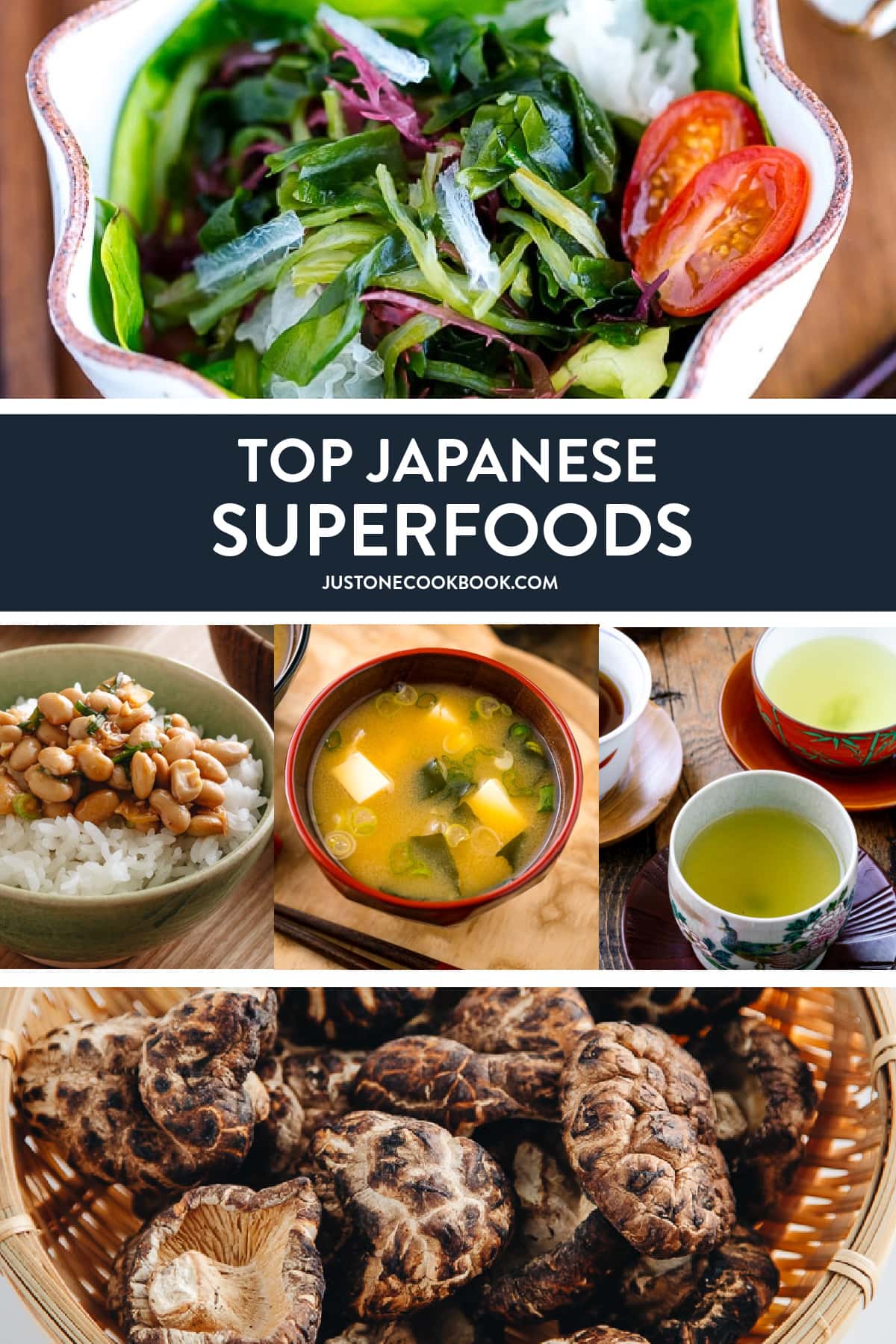
What are superfoods? According to the Oxford Dictionary, ‘superfood’ is defined as “a nutrient-rich food considered to be especially beneficial for health and well-being.”
While it may be a 21th-century buzzword coined by the food industry, the concept of superfoods has long existed in the Japanese culture. They are the naturally perfect foods valued for their health-supporting vitamins, nutrients, and minerals essential to the well-being of your body.
If you enjoy Japanese cuisine, it’s worth including these superfoods in your diet regularly and in a moderate amount. Let’s take a closer look!
Top Japanese Superfoods to Include in Your Diet
1. Seaweed
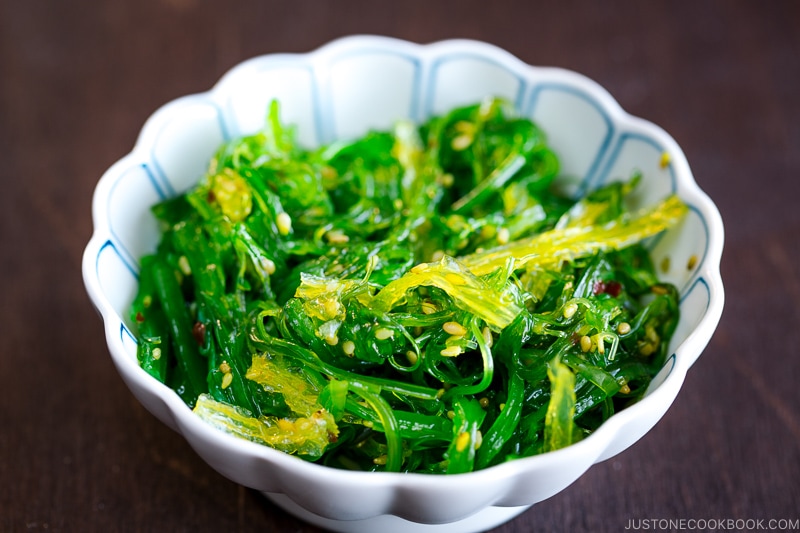
The Japanese cook and eat seaweed almost every day. These highly nutritious sea vegetables are packed with many important nutrients including vitamins A, C, E, B complex and B12 as well as calcium, potassium, and iron. They provide protein and fiber, and even omega-3 fatty acids. If you are a vegetarian or vegan, seaweeds are particularly beneficial to be included in your diet.
There are a variety of seaweeds you can try: kombu kelp, nori, hijiki, wakameand so on. Kombu kelp is most commonly used to make dashi soup stock. Wakame is excellent in miso soup or salads. Nori is typically used in sushi rolls and rice balls, but you can easily add the shredded nori into rice bowls or noodle dishes for taste and crunch!
To learn more: Discover Seaweed: The Essential Ingredient of the Japanese Diet.
Here are some delicious & easy seaweed recipes you can enjoy regularly:
2. Mushroomskind
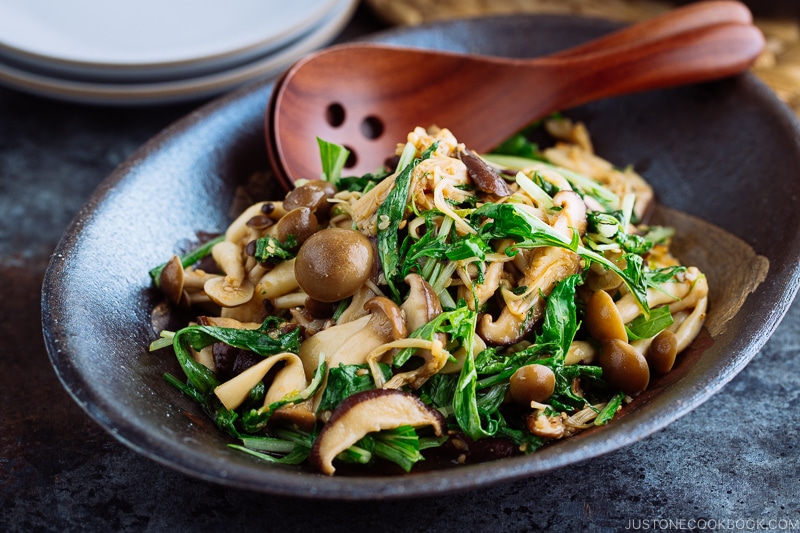
From boosting the immune system to promoting healthy skin, mushrooms are some of the most powerful superfoods on earth! Japanese cooking includes shiitake mushroom, enoki mushrooms, dried ear wood mushrooms, shimeji mushrooms and more.
Mushrooms are incredible for your microbiome and are the ideal source of calorie-free nutrients. As mushrooms are grown using agricultural waste products, they also make a great sustainable food choice. Yes to that!
Thanks to its umami and unique texture, you can literally use mushrooms in all sorts of dishes. Add them into your soups, hot pots, stir fry dishes, casseroles and noodles!
Here are some delicious mushroom recipes:
3. Green Tea
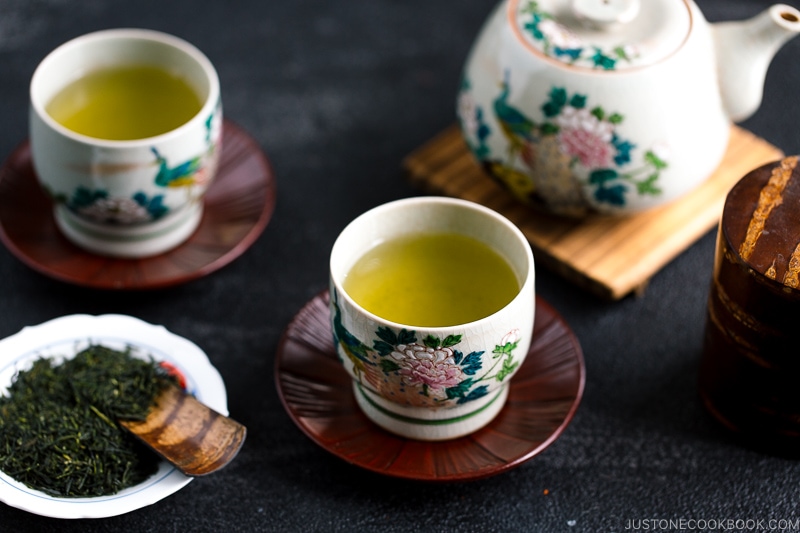
On average, the Japanese drink 4-5 cups of green tea a day. It is the national drink of the Japanese. Rich in antioxidants and polyphenolic compounds, this ancient beverage (superfood) has been known for a wide array of medicinal properties. Green tea also supports cardiovascular and metabolic health and prevents fatty buildup in arteries. It makes a great beverage choice especially after a heavy meal or high in sodium or oily food.
There are various types of green tea you can enjoy. For everyday drinking, we recommend sencha (煎茶)—the most common green tea consumed in Japan. You can also try Gyokuru, a higher quality green tea that is shade-grown. To get the most out of green tea, make a pot of fresh brewed hot tea every day. You can also add the loose tea in an individual tea strainer (the metal tea ball) for a quick cup.
Another green tea that is worth trying is matcha (抹茶), a high-quality green tea that is covered before picking, then stone-ground into a fine powder. Traditionally, matcha green tea is only served at a tea ceremony, but you can now enjoy this special green tea by making a matcha latte or smoothie. It makes a great alternative than coffee if you need caffeine but without the crashing effect on the system.
Wish to learn more: Read Green Tea: A Century-Old Japanese Drink for Better Health
Here are some delicious ways to enjoy green tea:
4. Miso
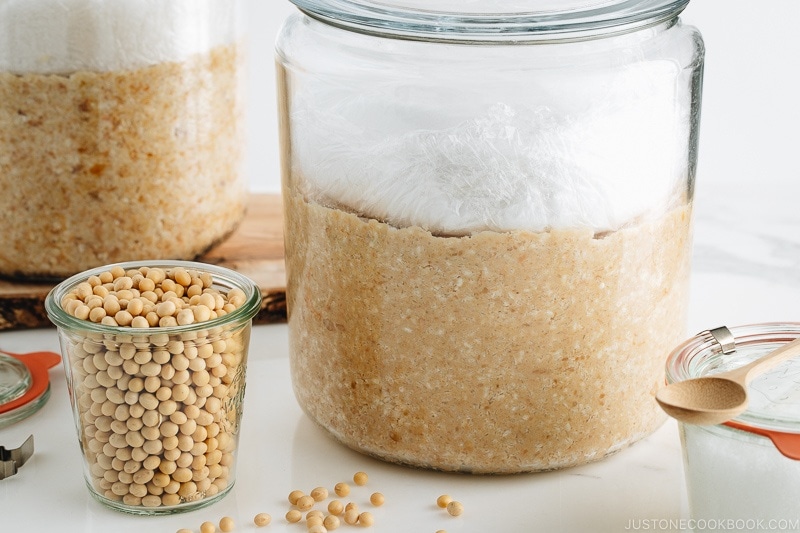
Made by fermenting soybeans, salt, and a starter culture called koji, miso is the magical condiment that contributes to overall health and exceptional flavor in Japanese food.
The Japanese use miso in almost everything from soups to dressings to marinades. With its salty, funky, sweet, yet intensely savory profile, miso is gaining widespread popularity in the west, and some chefs even utilize miso in dessert-making.
The health benefits of miso start with its complete source of proteins. That means it has all the amino acids essential to our bodies. It is also rich in tremendous vitamins, minerals, and beneficial plant compounds. As a complex fermented superfood, miso contains probiotics that can promote gut health and digestion.
To enjoy the incredible health benefits of miso, you can have a tasty bowl of miso soup every day or regularly.
Wish to learn more? Read Miso: Types & Uses
Here are delicious & easy miso recipes you can enjoy regularly:
5. Natto
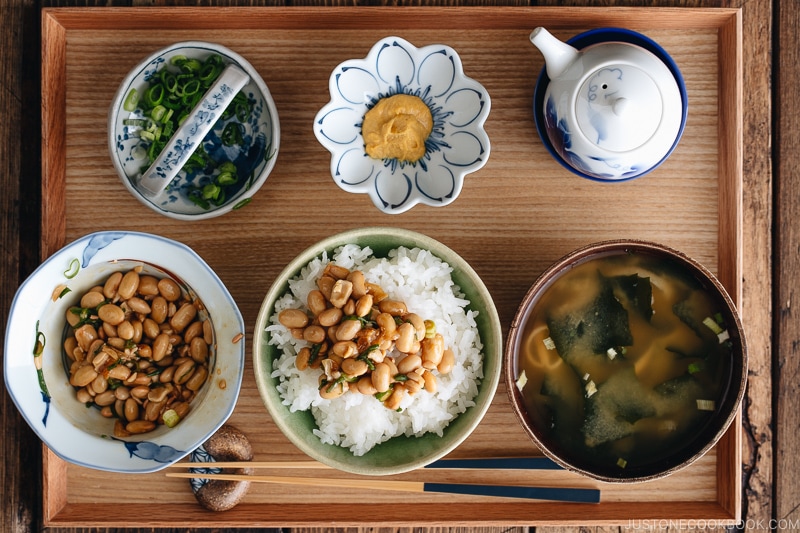
Pungent stinky food often makes it to the superfood list. In this case, we’re talking about natto, the fermented soybeans that are often being described as smelly cheese. A traditional Japanese food, natto is most often eaten at breakfast with rice, along with green onions, soy sauce, and mustard.
Because of its pungent smell, viscous texture, and assertive flavor, natto requires an acquired taste even for the Japanese. Despite its unique characters, natto does have a lot to offer. It has been looked upon as a superfood food by the Japanese since ancient times. Just like other fermented soy foods, natto is an excellent source of protein, minerals and vitamin K which helps to reduce the risk of blood clotting.
It takes an adventurous taste bud and open mind to give natto a try, but it’s totally worth it! Natto is best with cold udon or steamed rice. We say give it at least 3 tries, and you may fall in love with this unique superfood.
In the US, you can find natto being sold in convenient packages in the refrigerator or freezer section of Japanese or Asian grocery stores.
6. Umeboshi (Japanese Pickled Plums)
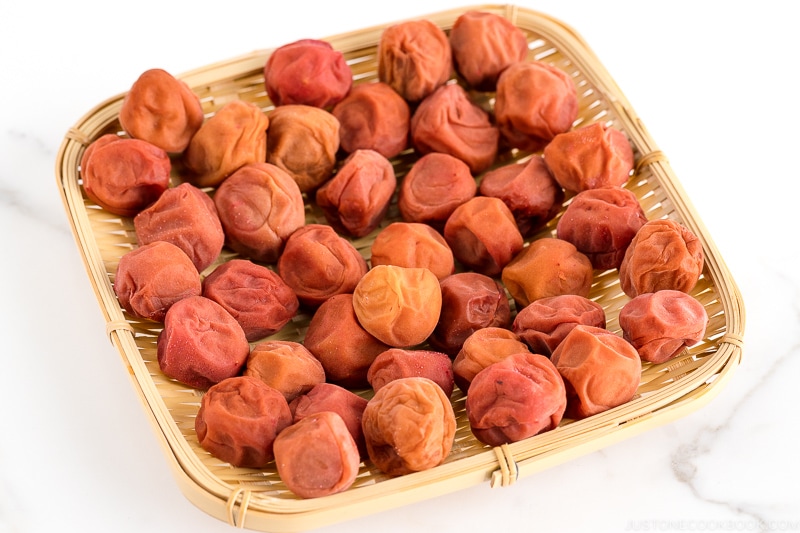
Notably known for its distinct sour and salty , umeboshi or Japanese pickled plums are a centuries-old traditional food and well-known for its substantial health benefits. Thanks to its high concentration of vitamins and citric acid, umeboshi is eaten to prevent colds or the flu. Some other benefits include aiding digestion, curing hangovers, relieving fatigue, and cancer growth.
The Japanese serve umeboshi as an accompaniment to their everyday meal, in rice balls and rice porridge, or as condiment for noodles. Another favorite way is to serve the reddish plum in a bed of rice in a bento like the Japanese flag.
Here are some delicious ways to enjoy umeboshi:
You can also smash umeboshi into paste and add it to your salad dressings, pasta sauces, or garnish.
7. Superfood Vegetables
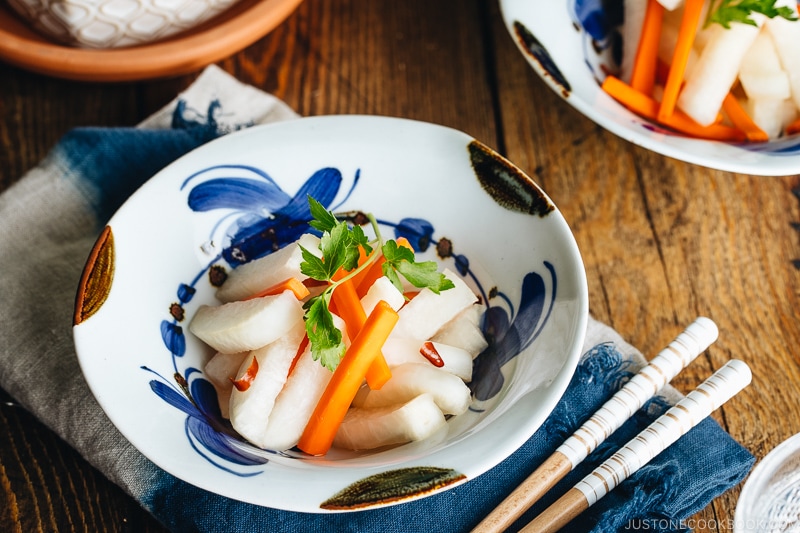
It’s a no brainer that vegetables are good for you, but there are some that are particularly packed with powerful antioxidant and anti-inflammatory properties. The Japanese enjoy a great variety of vegetables—from leafy greens to root vegetables—in their overall diet and have a tradition of maximizing nutritions in the everyday meal. The healthiest superfood vegetables include:
- Daikon – A long white radish widely enjoyed in Japanese cuisine, daikon is well known for its detox qualities. It also helps improve digestion and blood circulation.
- Kabocha – Also known as Japanese pumpkin, kabocha is a type of Japanese winter known for its versatility and signature sweet flavors. It is one of those vegetables Japanese moms tell their kids to eat for good nutrition.
- Lotus Roots (Renkon) – Edible rhizome of the lotus plant, lotus root is a popular ingredient in Japanese and many Asian cuisines. Different parts of lotus root have been used for traditional medicinal purposes for centuries.
- Komatsuna – Japanese mustard spinach that is rich in calcium. You can stir-fry, pickle, boil, or add the leafy greens to soups or fresh in salads.
- Burdock Roots (Gobo) – This root vegetable is used extensively in Japanese cuisine in simmered dishes and stir-fries. It is well-known for its antioxidant, disease-preventing, and health-promoting properties.
- Shungiku (Chrysanthemum Greens) – A grassy and mildly bitter green, shungiku has a distinctive aroma with high nutritional content. The greens are rich in vitamin C, calcium, iron, carotene, flavonoids, and potassium, and contain more beta-carotene than spinach and other winter leafy greens.
If you live near a Japanese/Asian grocery store, you would be able to access the superfood vegetables above. Daikon and kabocha are getting mainstream so you’ll be able to find them at regular grocery stores or at farmers markets.
Eating For Better Health
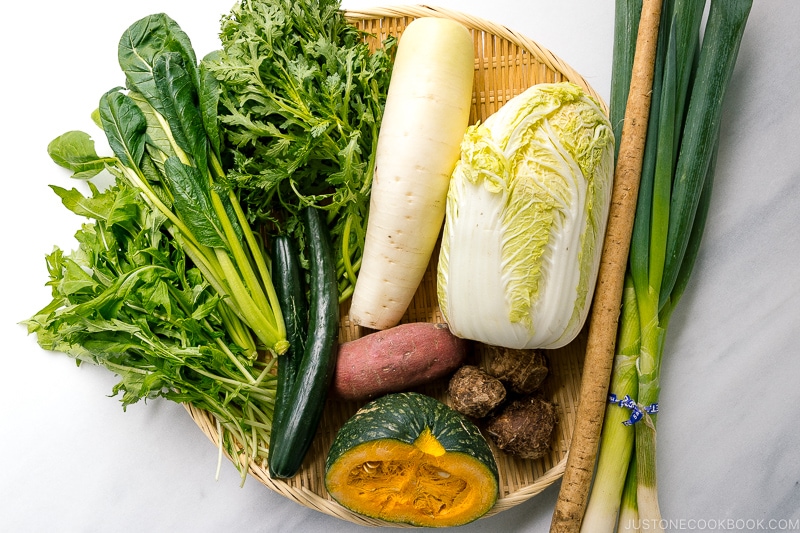
As the old adage goes, food is medicine. The Japanese have always considered food from their nutritious values.
In addition to the superfoods above, you can find plenty more healthy foods being eaten, particularly in the traditional Japanese diet. They often include land and sea vegetables, a great many fish, high in omega-3 fatty acids and low in sugar. The focus is on achieving optimal health through a diverse range of food and nutrition, rather than on one or two of the latest health trends.
Another good tip is to follow the hara hachi bu principle: Eat until you’re 80% full. This cultural practice of mindful eating came from Okinawa and is part of the reason that Okinawa has a higher percentage of centenarians than anywhere else in the world!
Combined with regular exercise, adequate sleep and a good dose of positivity, we can all do a little better in achieving good health.
Do you eat any of the Japanese superfoods above regularly? Is there any specific food you’d like to learn more about? Let us know in the comments below.

